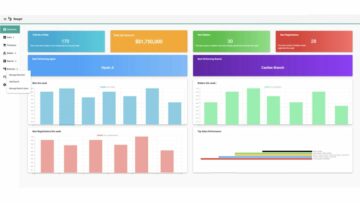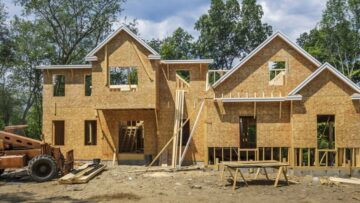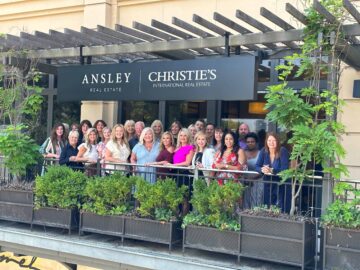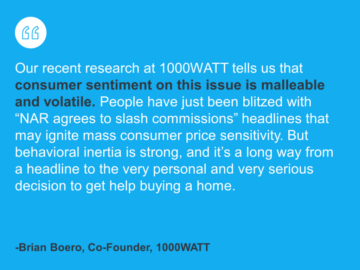Persistent wage disparities and pandemic-induced familial stressors pushed single millennial women out of homeownership with rates dropping near the all-time low of 19.4 percent, according to a new Zillow market analysis.
In these times, double down — on your skills, on your knowledge, on you. Join us Aug. 8-10 at Inman Connect Las Vegas to lean into the shift and learn from the best. Get your ticket now for the best price.
Persistent wage disparities and pandemic-induced familial stressors wiped out nearly half of the single millennial women’s homeownership gains in 2022, according to a Zillow market analysis published on Friday.
From 2016 to 2021, single millennial women aged 25 to 34 increased their homeownership rate from 19.4 percent to 28.6 percent — bringing them 1.8 percentage points away from the homeownership rate for their male counterparts (29.6 percent).
However, Zillow analysts said those gains were lost in the first years of the COVID-19 pandemic as young women were more likely to leave jobs to care for family members, resulting in a 2 percentage point decrease in job participation compared to a 1.3 percentage point drop for men.
“Single women had made great strides in narrowing the homeownership gap, but the pandemic reminded us that progress is not always linear,” Zillow Chief Economist Skylar Olsen said in a prepared statement. “Despite women showing remarkable resilience in returning to the workforce, single women’s homeownership rate took a heavy hit in 2022.”
Olsen said the pandemic’s disproportionate impact on single millennial women’s career trajectories and earning prospects pushed the group’s homeownership rate down to 24.5 percent in 2022 as lower wages made it impossible to successfully navigate rising mortgage rates and home prices.

Skyler Olsen
“The road to affordable homeownership remains an uphill battle,” she said.
Zillow analysts said millennial women’s best chance to catch up to their millennial male counterparts’ homeownership rate will be found in affordable markets across the Midwest, Southeast and the Rust Belt, which stretches from northern New York state to northern Tennessee and across parts of Ohio, Indiana and Michigan.
Single millennial women making a median salary can afford more than a third of active listings in Pittsburgh, St. Louis, Detroit and Buffalo and more than 80 percent of the listings single men can afford. The same demographic of women has an even better chance in Atlanta; Baltimore; Washington, D.C.; and Raleigh where they can, on average, afford at least 2 percent of all active listings and at least 90 percent of the listings single men can afford.
Meanwhile, young single women in Cincinnati, Kansas City, Oklahoma City, Minneapolis, Jacksonville, and New Orleans experienced the largest gender-based disparities in housing affordability, with single women affording 70 percent fewer listings than single men.

Olsen said single millennial women may need “creative solutions” to get their footing, such as purchasing homes with other family members or single friends. An analysis of homeownership rates for singles showed rates increased from 43.2 percent for households with one member to 45.7 percent for households with two members to 58.1 percent for households with three members.

“For women to access that greater control that comes with being your own landlord, it may be worth considering the option of doubling up or other creative solutions. Because by the homeownership rate record board, 2022 was a hard year for single women,” the report reads.
- SEO Powered Content & PR Distribution. Get Amplified Today.
- Platoblockchain. Web3 Metaverse Intelligence. Knowledge Amplified. Access Here.
- Source: https://www.inman.com/2023/03/24/single-millennial-womens-homeownership-rate-tanked-in-2022/
- :is
- $UP
- 1
- 1.3
- 10
- 2016
- 2021
- 2022
- 28
- 7
- 70
- 8
- a
- access
- According
- across
- active
- afford
- affordable
- aged
- All
- all-time low
- always
- analysis
- Analysts
- and
- AS
- At
- Atlanta
- Aug
- average
- baltimore
- Battle
- BE
- because
- being
- BEST
- Better
- board
- Bringing
- Buffalo
- by
- CAN
- care
- Career
- Catch
- Chance
- chief
- City
- COM
- compared
- Connect
- considering
- control
- COVID-19
- COVID-19 pandemic
- Creative
- D.C.
- decrease
- demographic
- double
- doubling
- down
- Drop
- Dropping
- Earning
- Economist
- Even
- experienced
- family
- family members
- First
- For
- found
- friends
- from
- Gains
- gap
- get
- great
- greater
- Group’s
- Half
- Hard
- heavy
- Hit
- Home
- Homes
- households
- housing
- HTTPS
- Impact
- impossible
- in
- increased
- Indiana
- IT
- Job
- Jobs
- join
- Join us
- jpg
- Kansas
- Kansas City
- knowledge
- landlord
- largest
- LAS
- Las Vegas
- LEARN
- Leave
- likely
- Listings
- Louis
- Low
- made
- Making
- Market
- Market Analysis
- max-width
- member
- Members
- Men
- Michigan
- Millennial
- more
- Mortgage
- Navigate
- Near
- nearly
- Need
- New
- New Orleans
- New York
- New York state
- of
- Ohio
- Oklahoma
- on
- ONE
- Option
- Other
- own
- pandemic
- participation
- parts
- percent
- percentage
- pittsburgh
- plato
- Plato Data Intelligence
- PlatoData
- Point
- points
- prepared
- price
- Prices
- Progress
- prospects
- published
- purchasing
- pushed
- raleigh
- Rate
- Rates
- record
- remains
- remarkable
- report
- resilience
- resulting
- returning
- road
- Rust
- Said
- salary
- same
- shift
- single
- skills
- Solutions
- State
- Statement
- Successfully
- such
- Tanked
- that
- The
- their
- Them
- These
- Third
- three
- ticket
- times
- to
- us
- VEGAS
- wage
- wages
- washington
- which
- will
- with
- Women
- Workforce
- worth
- year
- years
- young
- Your
- zephyrnet
- Zillow













